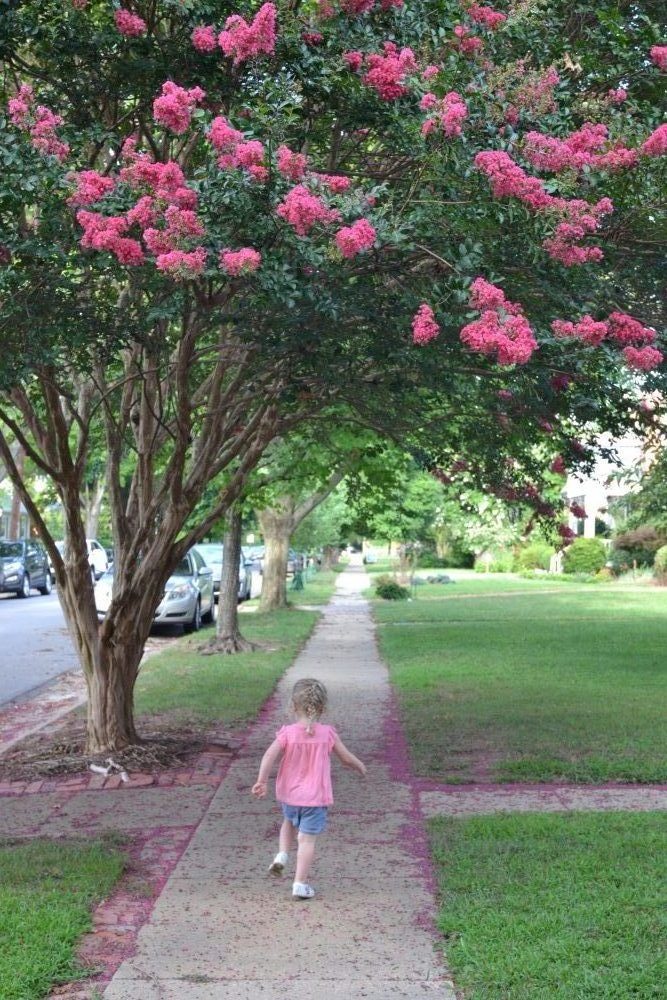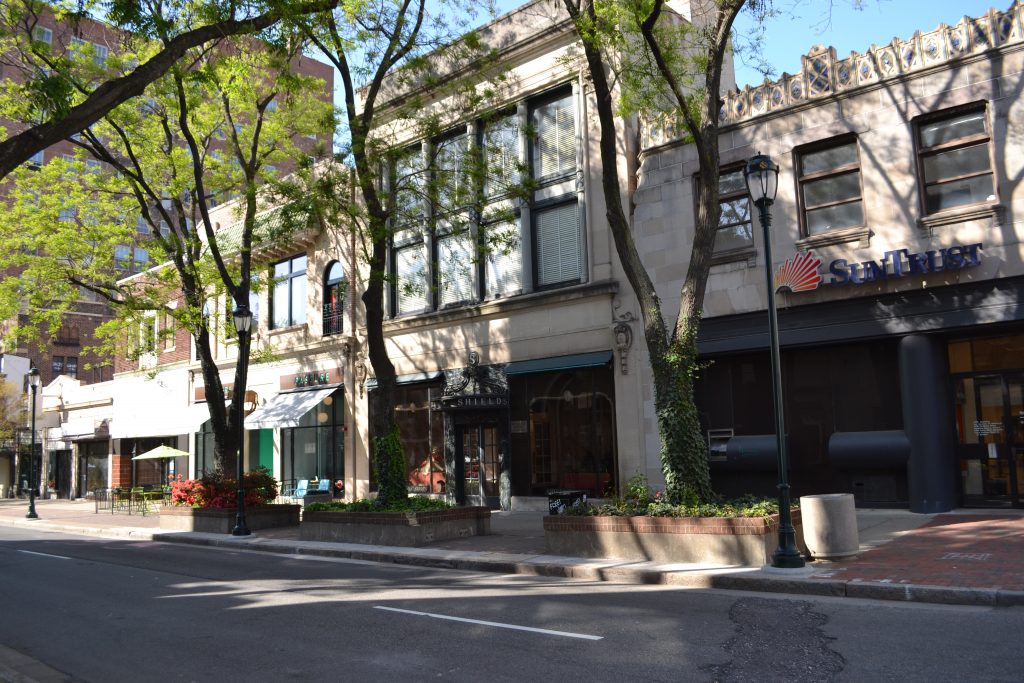RVA Urban Forest Branches Out
An Urban Forest Growing in Your City
Urban forests are thriving in Richmond. For 25 consecutive years, RVA has been designated a “Tree City USA” by the Arbor Day Foundation.
RVA’s urban forest is spreading its canopy. It comprises every tree in the city limits, whether planted in medians, or residential districts and parks. Each of A child enjoys outdoor play along a tree-lined sidewalk.the 110,000 city-owned trees contributes to the well-being of residents, businesses and ecosystems.
Trees help improve land values and the quality of air and water. They also reduce noise pollution and soil erosion. Wildlife welcomes trees for nesting, food and shelter, while people appreciate their beauty and shade. Trees support social and urban stewardship, too, when neighborhoods and arborists work together to plant, maintain and appreciate them.
Which trees are best selections for urban planting?
Richmonders definitely benefit from trees, but not just any trees. The long-term benefit is maximized when the right tree is planted in the right place at the right time.
“First, we consider the available planting space to determine whether to plant a small, medium or large tree,” said Alexander Elton, a certified arborist. “That includes looking up to see how close other trees, utilities and houses may be.” Alexander, who works with the City of Richmond’s Urban Forestry Department, said it’s best to fit the largest tree possible into the available space for the greatest impact over time. He recommends fall as the ideal time for planting.
“Consider what you want to accomplish, too,” added Grace Chapman Elton, Alexander’s wife, who is the director of horticulture at Lewis Ginter Botanical Garden. “Do you want four-season beauty (crape myrtle) or spring flowering (dogwood)? Or do you want to be more supportive of wildlife (oak)?”
Some trees are known not to fare well over time, Alexander noted.
“For example, Bradford pears were popular for a while, but at about 20 years they tend to fail due to poor branching structure, disease or fire blight.”
“It’s also important to know if the tree species you are choosing has separate genders,” Grace said. “The male gingko or a sterile ginkgo is a beautiful specimen that thrives in an urban environment, but the female drops messy and very smelly fruit.” Magnolias also cause untidiness when shedding their blooms and foliage, but they can be used in areas if sufficient room allows debris to remain without interfering with sidewalk traffic or homeowner landscapes.
Whatever the task—planting, pruning or removal—permits are required when the tree is located on City property. In turn, if a City-owned tree falls or creates a safety hazard, citizens can dial 311 to dispatch assistance. Additional information and permit forms are available in the Urban Forestry section of the city of Richmond’s website.
Several groups support urban-tree planting with knowledge, resources and sometimes hands-on involvement, including the Richmond Tree Stewards’ volunteers, the Virginia Urban Forest Council and the Arbor Day Foundation.
Grace, who shares her husband’s passion for trees, is quick to encourage local involvement.
“Our urban forest is vital to our community, and it takes everybody to ensure its health.”
This article first published in the Richmond Times-Dispatch in August 2016.

